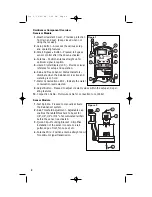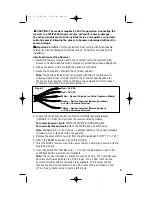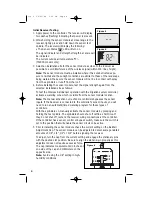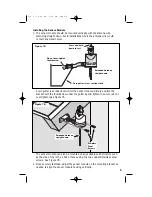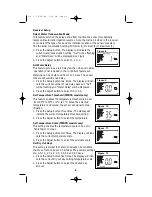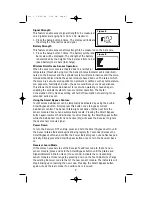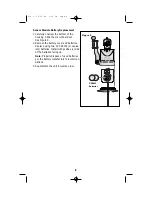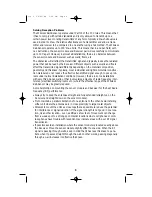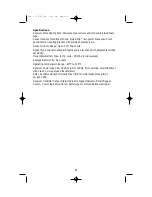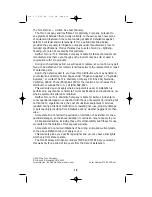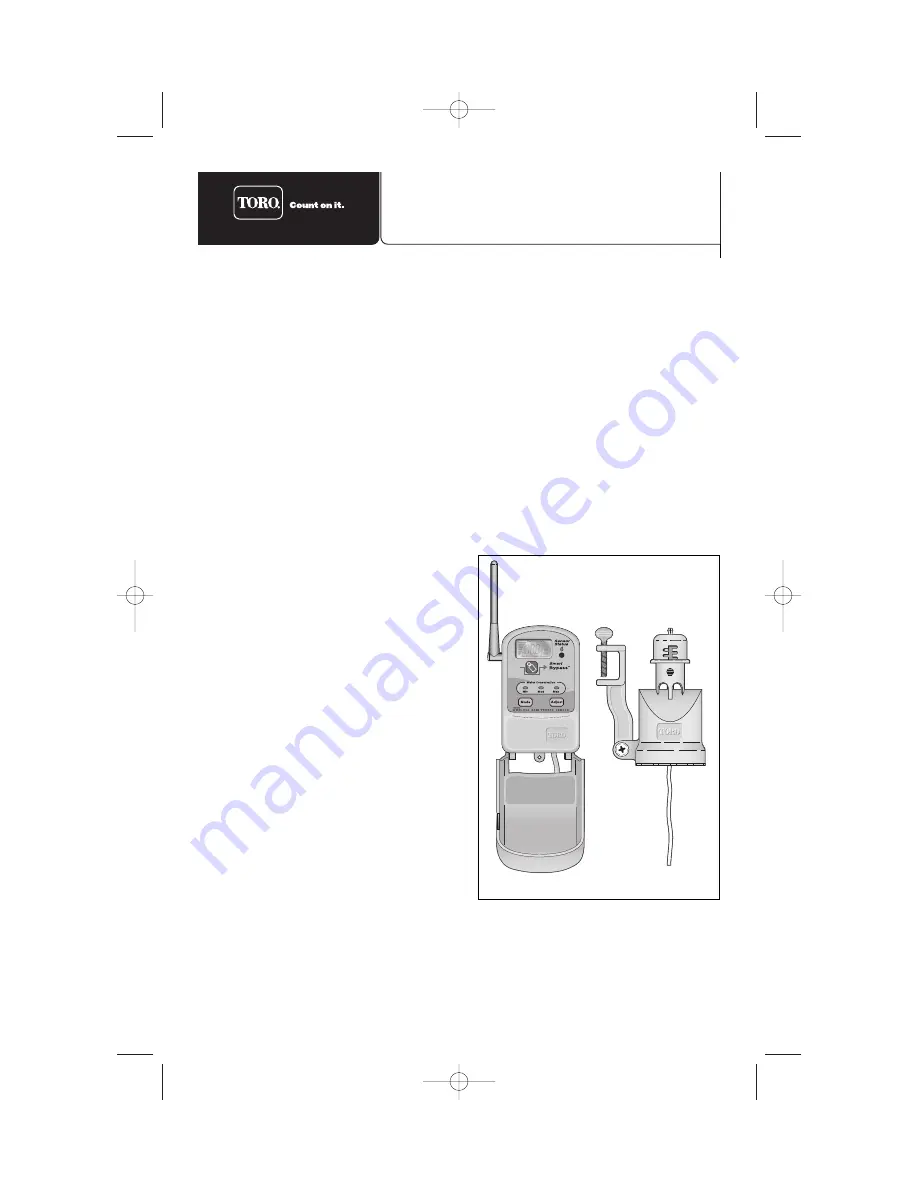
Introduction
The Toro Wireless RainSensor, models TWRS and TWRFS (rain/freeze sensor),
working in conjunction with your irrigation controller, will automatically suspend
watering when a predetermined rainfall amount or temperature is met.
The Wireless RainSensor system consists
of two components: A digital, program-
mable receiver and a remote sensor
module. The receiver installs next to the
controller and connects to the 24 VAC
power source and sensor terminals
(if included) or splices into the valve
common circuit. The sensor module is
attached to a rain gutter, roof edge, fence,
etc. within 500 feet (line of sight) of the
receiver. Sensor information is sent to the
receiver using an ultra high-frequency
radio signal.
To compensate for variations in soil type
and sensor location, the receiver is easily
programmed to delay the controller from
resuming operation up to 4 days. This
feature also enables controller operation
to be placed in “Rain Delay” mode from 1
to 5 days when inclement weather condi-
tions are expected.
Now, take a moment to browse completely through this guide before starting the
installation. Since the Wireless RainSensors is an accessory for your irrigation
controller, it will be helpful have the controller user’s guide on hand for reference.
Receiver
Sensor
Table of Contents
RainSensor Component Overview ......2
Install and Connect the Receiver.........2
Initial Receiver Testing .........................3
Sensor Threshold Adjustment..............1
Installing the Sensor Module ...............1
Testing System Operation....................5
Receiver Set Up ...................................6
Rain/Freeze Sensor Operation.............7
Using the Smart Bypass Feature .........7
Power Down.........................................7
Receiver Learn Mode...........................7
Sensor Battery Replacement ...............8
Solving Reception Problems................9
FCC Information...................................1
Specifications.......................................1
Warranty ...............................................1
Wireless RainSensor
™
Models TWRS and TWRFS
Installation and Operation Guide
Doc 5 12/21/04 6:51 PM Page 1


